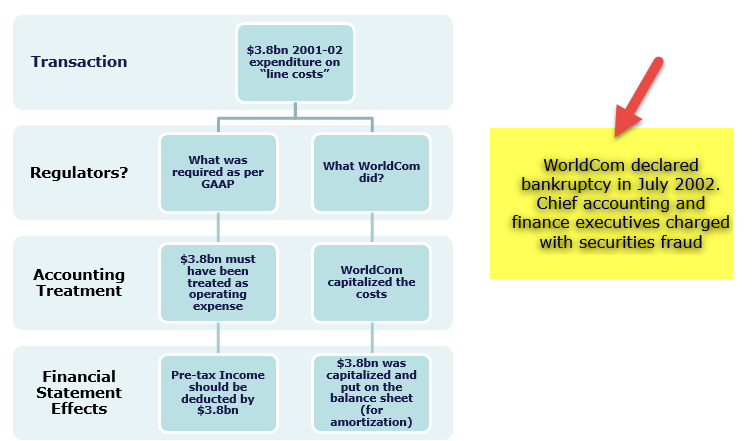By Sunday night, when Mitch Mc, Connell required a vote on a new costs, the bailout figure had actually broadened to more than five hundred billion dollars, with this big sum being apportioned to two separate proposals. Under the very first one, the Treasury Department, under Secretary Steven Mnuchin, would supposedly be given a budget of seventy-five billion dollars to provide loans to specific companies and markets. The second program would operate through the Fed. The Treasury Department would provide the main bank with 4 hundred and twenty-five billion dollars in capital, and the Fed would utilize this money as the basis of a massive loaning program for firms of all sizes and shapes.
Information of how these schemes would work are unclear. Democrats said the new expense would provide Mnuchin and the Fed overall discretion about how the cash would be dispersed, with little openness or oversight. They slammed the proposal as a "slush fund," which Mnuchin and Donald Trump could utilize to bail out favored business. News outlets reported that the federal government wouldn't even have to recognize the aid receivers for approximately six months. On Monday, Mnuchin pressed back, stating people had misconstrued how the Treasury-Fed partnership would work. He may have a point, but even in parts of the Fed there may not be much interest for his proposition.
during 2008 and 2009, the Fed dealt with a great deal of criticism. Evaluating by their actions so far in this crisis, the Fed chairman, Jerome Powell, and his colleagues would choose to concentrate on supporting the credit markets by purchasing and underwriting baskets of monetary possessions, rather than lending to individual companies. Unless we want to let struggling corporations collapse, which could accentuate the coming depression, we require a method to support them in a sensible and transparent manner that decreases the scope for political cronyism. Thankfully, history offers a template for how to perform corporate bailouts in times of acute tension.

At the beginning of 1932, Herbert Hoover's Administration set up the Restoration Finance Corporation, which is typically described by the initials R.F.C., to supply assistance to stricken banks and railroads. A year later, the Administration of the freshly chosen Franklin Delano Roosevelt greatly expanded the R.F.C.'s scope. For the rest of the nineteen-thirties and throughout the Second World War, the institution offered essential funding for organizations, farming interests, public-works plans, and disaster relief. "I believe it was a great successone that is typically misunderstood or overlooked," James S. Olson, a historian at Sam Houston State University, in Huntsville, Texas, told me.
It slowed down the meaningless liquidation of assets that was going on and which we see some of today."There were 4 keys to the R.F.C.'s success: self-reliance, leverage, leadership, and equity. Developed as a quasi-independent federal company, it was managed by a board of directors that included the Treasury Secretary, the chairman of the Fed, the Farm Loan Commissioner, and four other individuals appointed by the President. "Under Hoover, the majority were Republicans, and under Roosevelt the majority were Democrats," Olson, who is the author of a comprehensive history of the Restoration Finance Corporation, said. "However, even then, you still had individuals of opposite political affiliations who were forced to communicate and coperate every day."The truth that the R.F.C.
Congress initially enhanced it with a capital base of 5 hundred million dollars that it was empowered to leverage, or multiply, by issuing bonds and other securities of its own. If we set up a Coronavirus Financing Corporation, it might do the exact same thing without straight involving the Fed, although the main bank may well end up buying some of its bonds. Initially, the R.F.C. didn't openly reveal which businesses it was lending to, which caused charges of cronyism. In the summer season of 1932, more transparency was presented, and when F.D.R. entered the White Home he discovered a proficient and public-minded individual to run the agency: Jesse H. While the initial goal of the RFC was to help banks, railways were helped due to the fact that many banks owned railroad bonds, which had declined in value, due to the fact that the railways themselves had experienced a decrease in their service. If railways recovered, their bonds would increase in value. This boost, or appreciation, of bond costs would improve the financial condition of banks holding these bonds. Through legislation approved on July 21, 1932, the RFC was authorized to make loans for self-liquidating public works job, and to states to supply relief and work relief to needy and unemployed individuals. This legislation likewise required that the RFC report to Congress, on a month-to-month basis, the identity of all brand-new debtors of RFC funds.
During the first months following the establishment of the RFC, bank failures and currency holdings outside of banks both declined. Nevertheless, numerous loans aroused political and public debate, which was the factor the July 21, 1932 legislation consisted of the arrangement that the identity of banks getting RFC loans from this date forward be reported to Congress. The Speaker of your house of Representatives, John Nance Garner, ordered that the identity of the loaning banks be made public. The publication of the identity of banks receiving RFC loans, which began in August 1932, lowered the efficiency of RFC lending. Bankers ended up being unwilling to borrow from the RFC, fearing that public revelation of a RFC loan would cause depositors to fear the bank was in danger of stopping working, and possibly start a panic (How to finance a second home).
Everything about What Does Principal Mean In Finance
In mid-February 1933, banking troubles established in Detroit, Michigan. The RFC wanted to make a loan to the distressed bank, the Union Guardian Trust, to prevent a crisis. The bank was among Henry Ford's banks, and Ford had deposits of $7 million in this specific bank. Michigan Senator James Couzens required that Henry Ford subordinate his deposits in the troubled bank as a condition of the loan. If Ford concurred, he would risk losing all of his deposits before any other depositor lost a cent. Ford and Couzens had actually as soon as been partners in the vehicle service, however had actually become bitter rivals.
When the negotiations failed, the governor of Michigan declared a statewide bank holiday. In spite of the RFC's determination to help the Union Guardian Trust, the crisis might not be prevented. The crisis in Michigan led to a spread of panic, first to nearby states, however ultimately throughout the nation. Day by day of Roosevelt's inauguration, March 4, all states had actually declared bank vacations or had limited the withdrawal of bank deposits for money. As one of his first function as president, on March 5 President Roosevelt revealed to the country that he was declaring an across the country bank vacation. Almost all banks in the nation were closed for organization throughout the following week.
The efficiency of RFC lending to March 1933 was restricted in a number of respects. The RFC needed banks to promise possessions as security for RFC loans. A criticism of the RFC was that it typically took a bank's best loan possessions as security. Hence, the liquidity supplied came at a high rate to banks. Likewise, the promotion of new loan receivers beginning in August 1932, and basic debate surrounding RFC loaning most likely discouraged banks from borrowing. In September and November 1932, the quantity of impressive RFC loans to banks and trust companies decreased, as payments went beyond new financing. President Roosevelt acquired the RFC.
The RFC was an executive company with the ability to get funding through the Treasury beyond the regular legal process. Therefore, the RFC might be used to finance a range of favored jobs and programs without acquiring legal approval. RFC financing did not count toward financial expenses, so the expansion of the function and impact of the federal government through the RFC was not reflected in the federal budget plan. The very first job was to support the banking system. On March 9, 1933, the Emergency Situation Banking Act was approved as law. This legislation and a subsequent change improved the RFC's capability to help banks by providing it the authority to buy bank chosen stock, capital notes and debentures (bonds), and to make loans using bank preferred stock as security.
This provision of capital funds to banks strengthened the monetary position of numerous banks. Banks could use the brand-new capital funds to expand their lending, and did not need to pledge their finest properties as security. The RFC purchased $782 million of bank chosen stock from 4,202 private banks, and $343 million of capital notes and debentures from 2,910 specific bank and trust companies. In amount, the RFC assisted almost 6,800 banks. Many of these purchases happened in the years 1933 through 1935. The favored stock purchase program did have questionable aspects. The RFC authorities at times exercised their authority as investors to minimize salaries of senior bank officers, and on event, insisted upon a change of bank management.

In the years following 1933, bank failures decreased to very low levels. Throughout the New Offer years, the RFC's help to farmers was 2nd just to its help to lenders. Total RFC loaning to farming financing organizations totaled $2. 5 billion. Over half, $1. 6 billion, went to its subsidiary, the Product Credit Corporation. The Commodity Credit Corporation was integrated in Delaware in 1933, and run by the RFC for six years. In 1939, control of the Commodity Credit Corporation was transferred to the Department of Farming, were it stays today. The agricultural sector was hit especially hard by depression, drought, and the intro of the tractor, displacing many little and occupant farmers.
Its objective was to reverse the decline of item prices and farm incomes experienced because 1920. The Product Credit Corporation added to this objective by purchasing picked farming products at ensured costs, usually above the prevailing market cost. Therefore, the CCC purchases established an ensured minimum rate for these farm items. The RFC also moneyed the Electric House and Farm Authority, a program created to allow low- and moderate- earnings families to buy gas and electric devices. This program would develop demand for electrical power in rural areas, such as the area served by the brand-new Tennessee Valley Authority. Offering electricity to rural areas was the objective of the Rural Electrification Program.